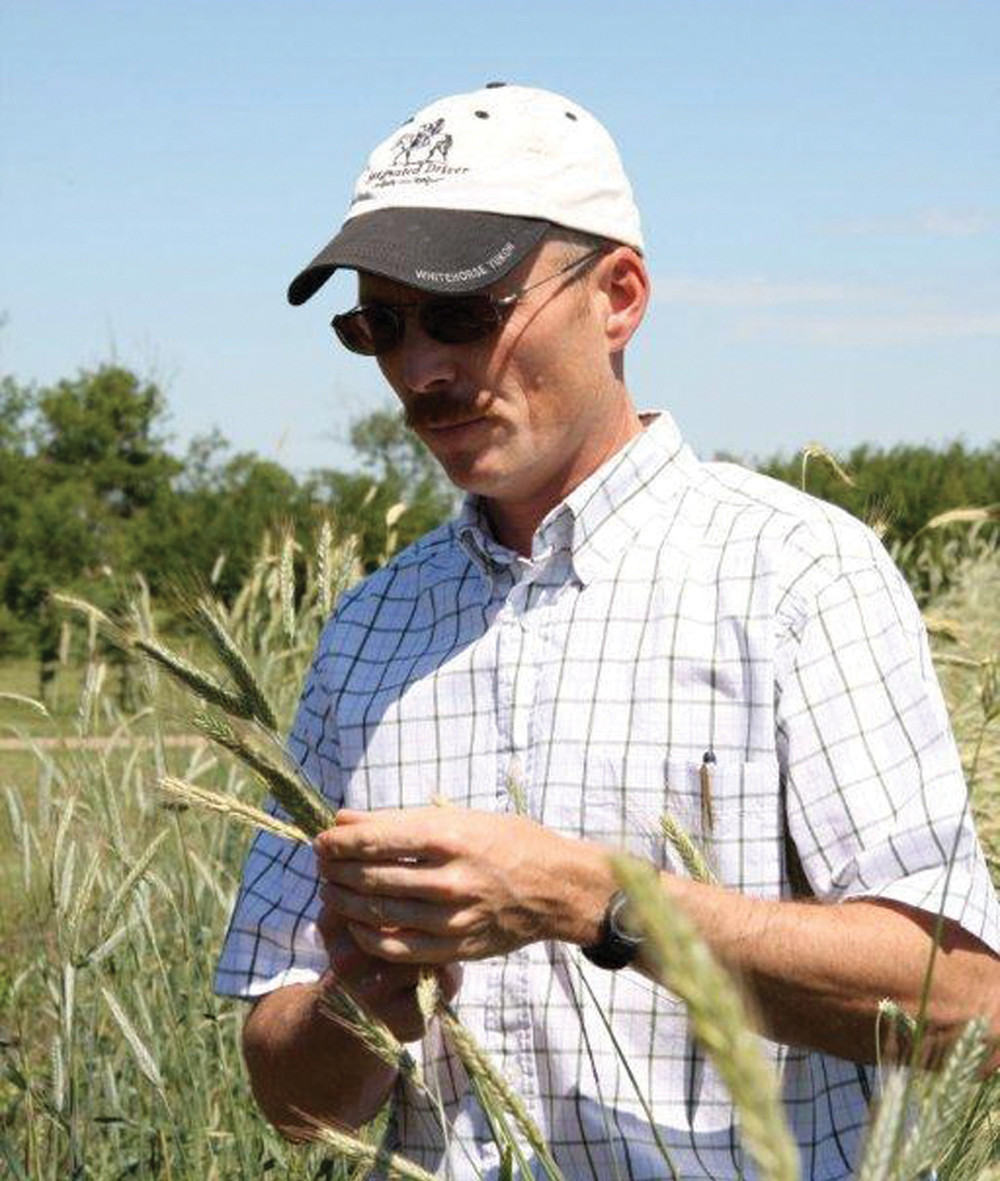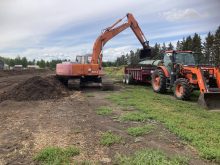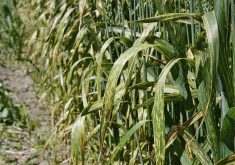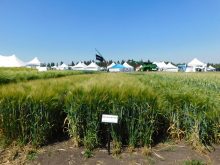Steven Snider was just 16 years old when he realized conventional farming wasn’t for him.
“I was spraying a wild oat herbicide on a field, and I got drift poisoning,” said the Edberg-area farmer and owner of Little Red Hen Mills.
“For three days, I was sick as a dog. That kind of changed my mind. I thought, if that’s doing that to me, why am I using it?”
That incident triggered the start of a nearly 30-year career in organic farming for Snider, who grows certified organic wheat, barley, oats, and rye for milling.
“Where we started and where we are today is an incredible journey,” said Snider.
And it hasn’t been an easy road to travel.
“When we got into organics, it was 10 years before the market was actually profitable,” said Snider.
“There were 12 of us, and we met in a basement in Vauxhall. We did it on principle. We didn’t do it for monetary gain.”
Since then, interest in organics has exploded — at least for consumers, said Becky Lipton, executive director of Organic Alberta.
“In Canada, we see 58 per cent of all consumers buy organic on a weekly basis. It shows the strong demand for organic products,” said Lipton, adding demand for organics is actually higher in Alberta than other regions in Canada.
“In Alberta, we have 13 per cent of the total share of organic sales in Canada, but we only have 11 per cent of the population.”
The growing success of the organics market is driven by the consumer, said Snider.
“The first rule of business is the customer’s always right,” he said. “What we’re providing is a product that consumers asked for and are willing to pay a premium for. It’s a specialized product for a niche market, and it has demand.”
Read Also
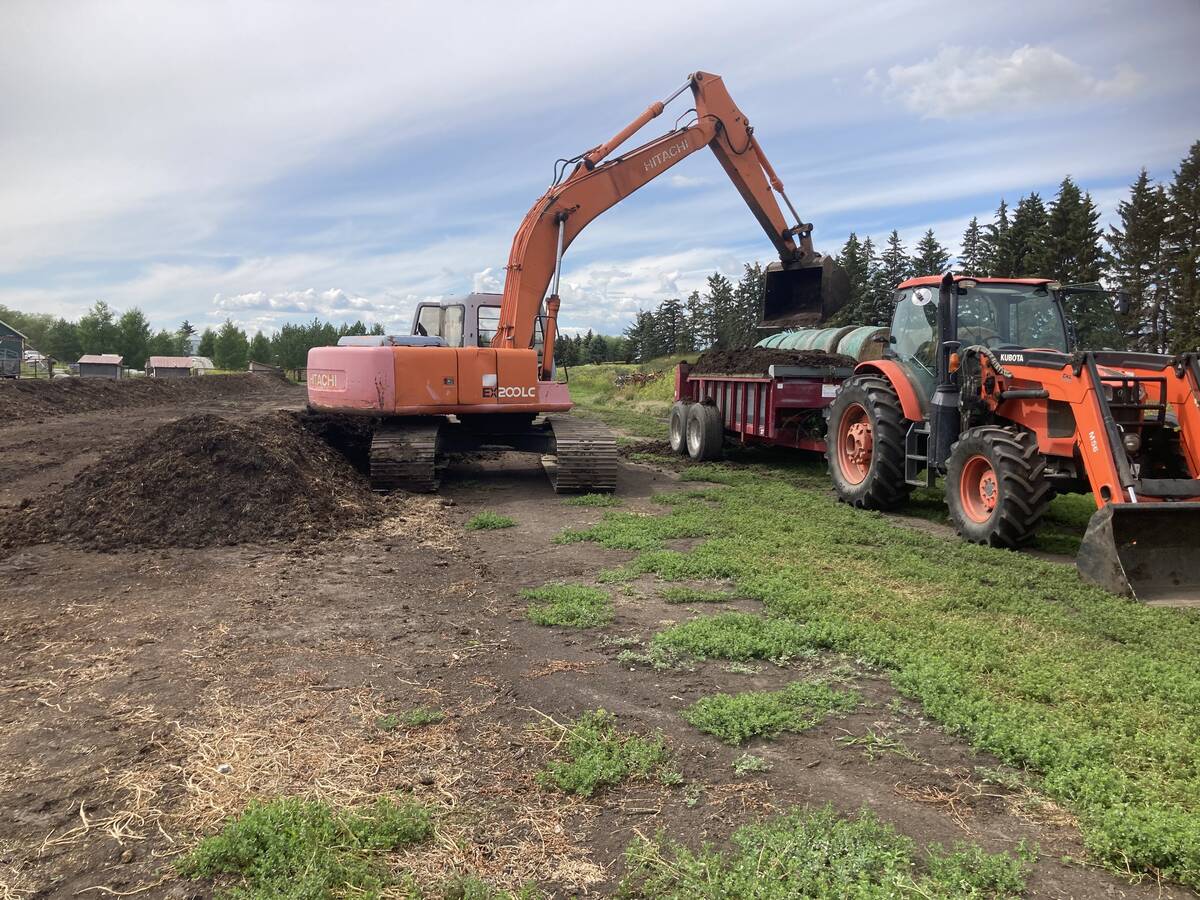
Digestate can now be stored and applied as an organic fertilizer
Amendments to Alberta’s Agricultural Operation Practices Act (AOPA) now permit digestate and “select organic material” from non-agricultural businesses to be stored or composted in manure storage facilities before being applied to land.
- More from the Alberta Farmer: The money’s good. But is organic for you?
Can’t keep up
But supply just hasn’t been able to keep up with demand, said Lipton.
“We’ve had a lot of our companies, both in Canada and the United States, come to us and say, ‘We’re concerned that we’re not going to be able to continue to grow in order to meet this demand,’” she said.
In 2013, Alberta had over 350 organic operations, including producers and processors. And that number has risen by more than 10 per cent annually since then, she said.
But that’s not enough, especially on the primary production side.
“There is such huge demand, and the demand is growing so fast,” she said. “If we’re not able to supply enough food ingredients in order for companies to be able to expand, we will potentially lose part of our market share.”
Ottawa recently pledged $1.2 million for a Prairie-wide project aimed at strengthening the organic sector, with organic food processors and others chipping in another $1 million.
That money for the Prairie Organic Grain Initiative, which will be housed at Organic Alberta, will “increase quality and quantity of organic production, as well as profitability” for all of the Prairie provinces, said Lipton.
“What we’re trying to do through this program is show the world that we can supply amazing grains and food ingredients on the Canadian Prairies and that we’re able to scale up to meet the demand,” she said. “As the market continues to grow, we want to be the go-to place to get your highest-quality organic grains.”
Dispelling myths
Ottawa’s funding pledge is an important step forward for the entire organics industry, said Snider.
“It’s exciting to see that the organic industry is growing and to get recognition from the federal government at that level.”
The funding is divided into three streams — one to attract new growers; one to improve quality and quantity of existing organic production; and one for market development.
A key part of attracting new growers will be dispelling the myths surrounding organic production, said Lipton.
“There’s this perception that it might be unmanageable or that it’s too labour intensive or that you may lose money if you go into organics. I would say all three of those things are misconceptions.”
But there is a learning curve, said Snider.
“There’s always a challenge with information transfer and training and getting the proper connection to someone who knows what they’re talking about,” he said.
“That’s where I think this grant is key to trying to grow the industry and provide funding for research and training new producers.”
So is getting the word out “that there is money to be made in organics and that we have the resources to be able to support them through the process,” said Lipton.
It’s a message that will be listened to by many young farmers because they see a business opportunity, predicted Manitoba organic producer Darcy Hickson.
“I think that’s where we’re going to see the greatest push for organic farm production,” he said. “Young producers are going back home to farm and the farm families aren’t saying, ‘Oh good, let’s turn the farm organic.’
“But they are saying, ‘Here’s a couple of fields to try this and implement some of the things you’ve learned.’
“They’re going to be the ones who are going to piece the organic puzzle together and show us all how to do it,” he said.

